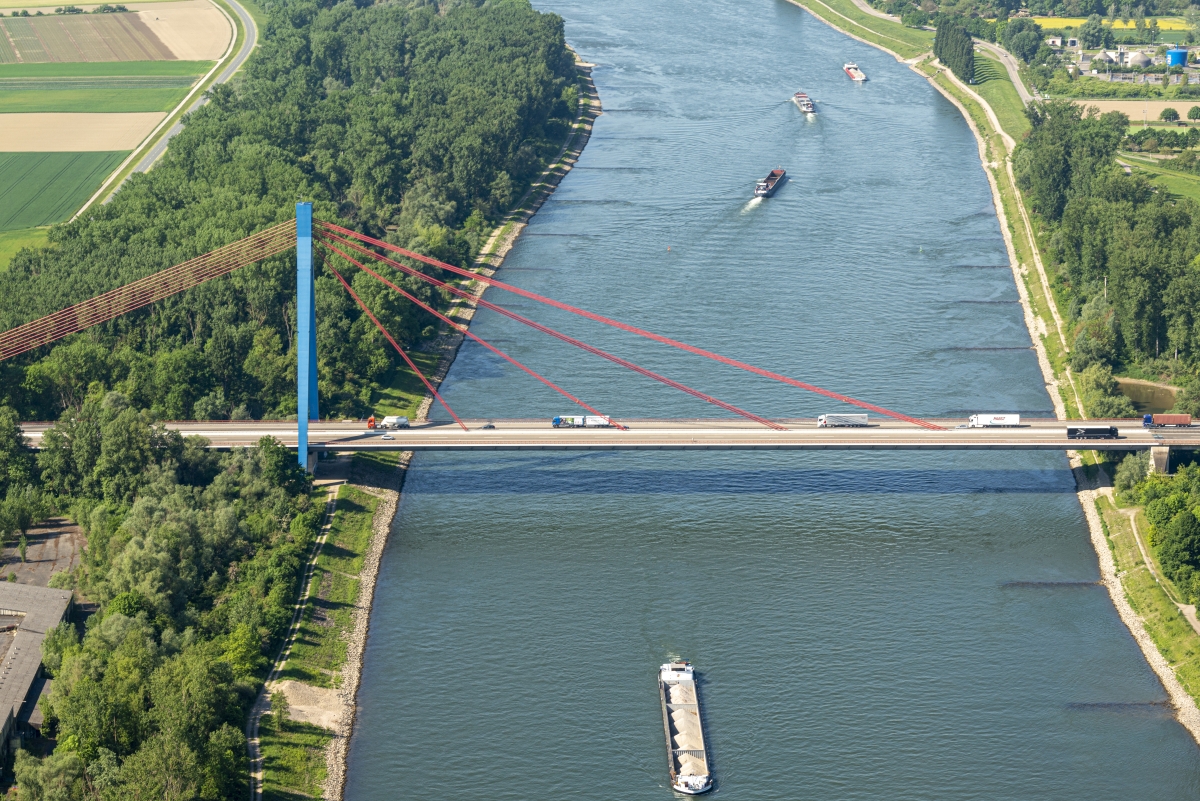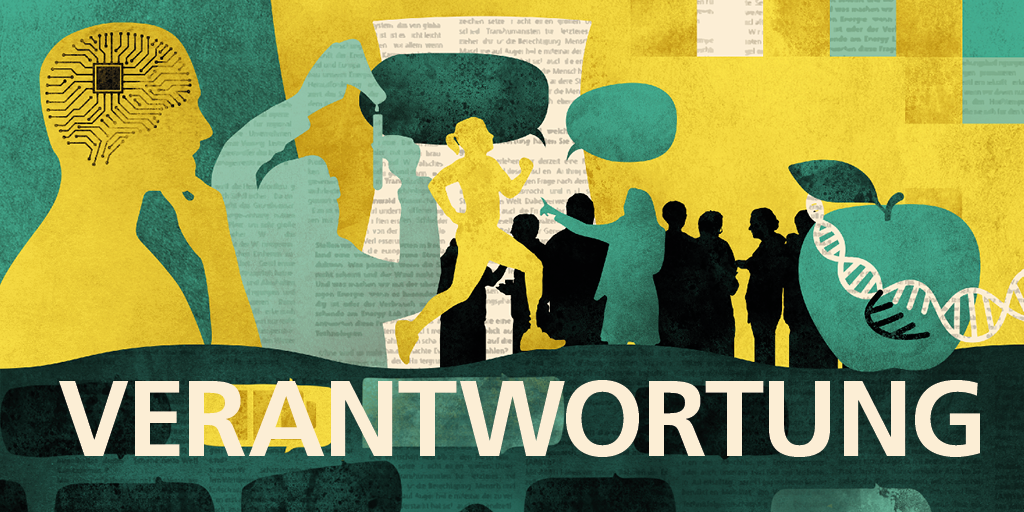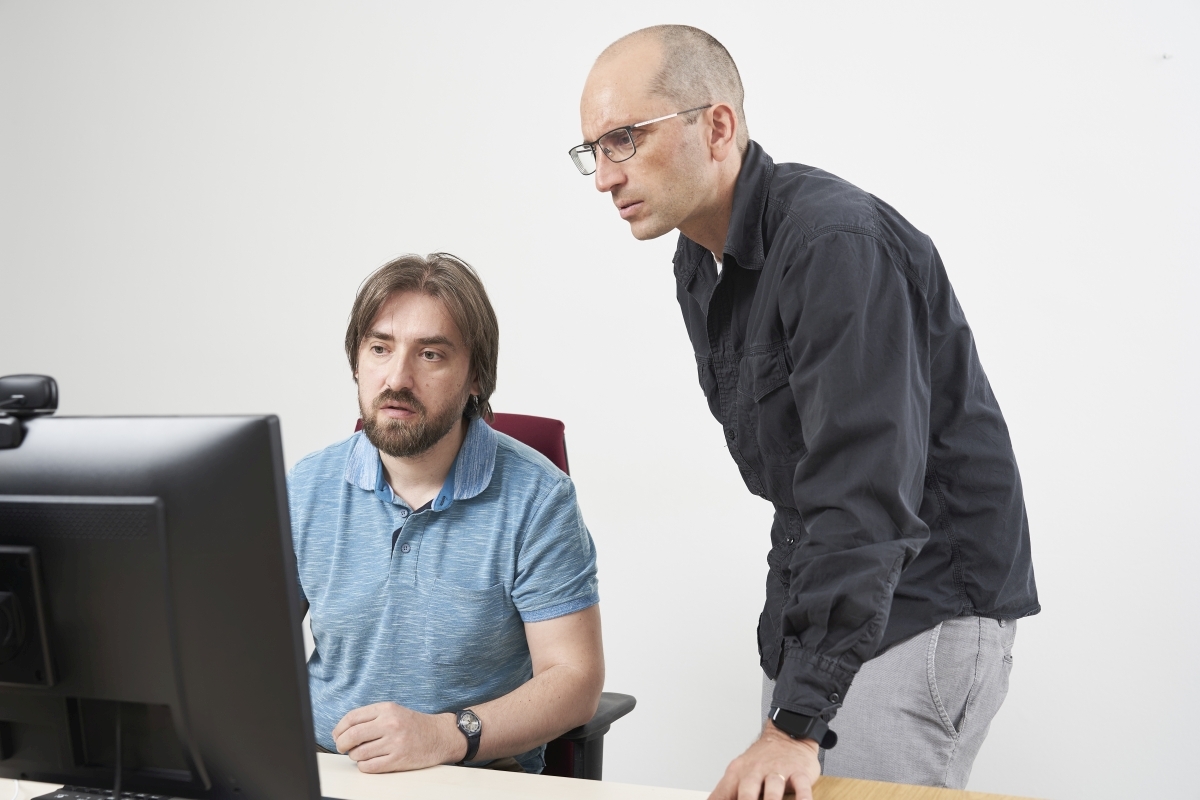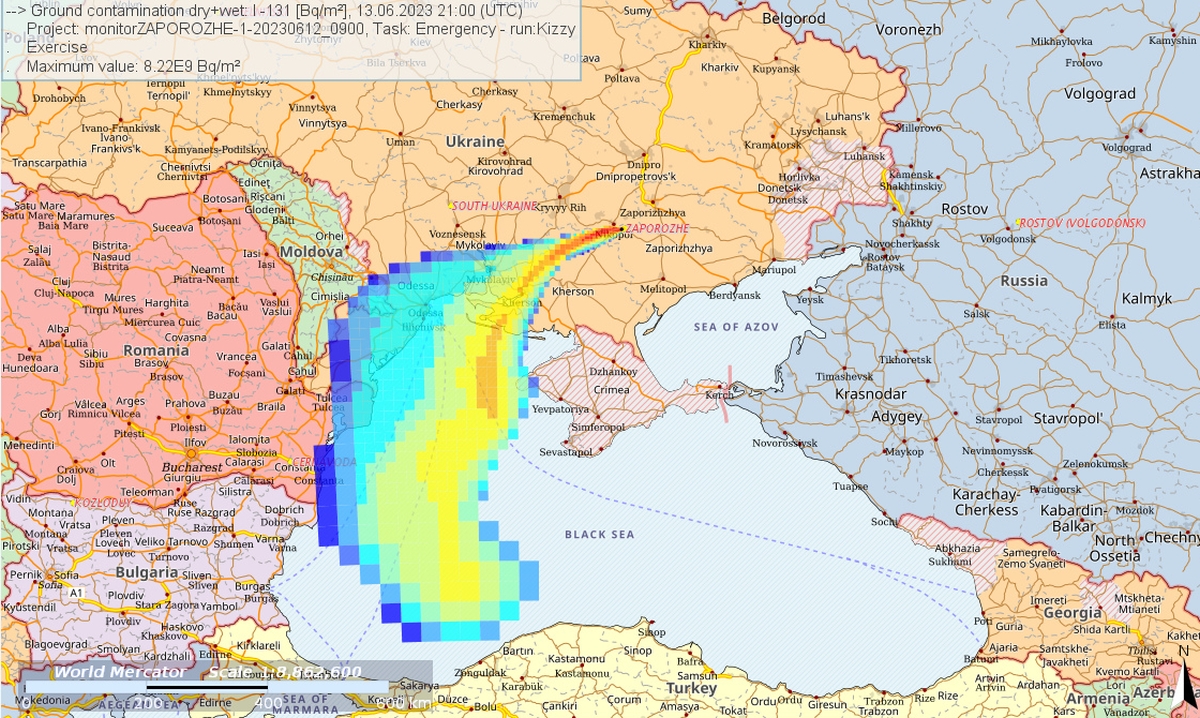Calculating for Cases of Emergency
For more than a year, researchers at Karlsruhe Institute of Technology (KIT) have been supporting the Ukrainian authorities on the subject of nuclear safety. The team of Sadeeb Simon Ottenburger provides decision support in the event of damage to one of the four nuclear power plants in the war-torn country.
“Let’s assume the hypothetical case that radioactivity escapes from a nuclear power plant,“ explains mathematician Sadeeb Simon Ottenburger from KIT‘s Institute for Thermal Energy Technology and Safety (ITES). “In such case, it is important to know how the radioactive cloud would spread. Using our RODOS system, we can make a prognosis as to the course of the spread including its effects and evaluate specific measures with regard to their effectiveness for disaster control.“
RODOS is a real success story: The roots of the Real-time Online Decision Support System go back to the early 1990s. The software was launched at Kernforschungszentrum Karlsruhe, a predecessor of KIT. “Since then, RODOS has grown into a solid system,“ says Ottenburger happily. “Keeping it running and developing it further is in the hands of scientists like us. There are no commercial ulterior motives. The system has been trusted for years and is used in over 40 countries.“
"What-if" Scenarios at Hourly Intervals
As is the case in Ukraine. There has been close contact with those responsible not least because of the accident at the Chernobyl Nuclear Power Plant. “There have been some projects with support from the European Commission since 2012,“ says Dmytro Trybushnyi, mathematician and scientist in Ottenburger’s team. “We installed the RODOS system in various organizations in the Ukraine and they have been working with it ever since.“ After the start of the war, he received several inquiries. “On the one hand, we were asked to reinstall the software on other PCs,“ Trybushnyi recalls. “Because the headquarters of one of our users is in Kiev. When the city was bombed, no one could get into the building.“ Help from Karlsruhe came promptly. The software was installed and set up over the network just a short time later.
“In addition, the Rivne Nuclear Power Plant asked us to define regular calculations for the four Ukrainian nuclear power plants,“ the expert continues. Because, quite obviously, when Europe’s largest nuclear power plant Zaporizhzhia in the southeast of the country was occupied by Russian troops and there were repeated power failures, the danger of a nuclear accident loomed over the country. ”Those responsible wanted to know what would happen if there was a moderately severe or severe accident,“ reports Trybushnyi. ”That’s why since April 2022, we’ve been calculating a scenario every hour in which radioactive material is released into the atmosphere.“
The team from Karlsruhe is collaborating closely with Japanese researchers. They use a different decision support system for atmospheric propagation and make their results available to KIT. “We compare the results. Because when two systems that are so different deliver similar results, the meaningfulness is increased enormously.“
“Basically, we make this calculation for all nuclear power plants that are in operation worldwide,“ adds Ottenburger. On the one hand, this is used for research, but on the other hand, it would also help to estimate the extent to which Central Europe could be affected by a radioactive cloud. “We may have phased out nuclear power, but this issue doesn’t stop at the border. Of course, the clouds can also move to Germany after an MCA.“ He also sees the calculations as a kind of backup for emergencies. If those responsible in a country cannot fall back on their own calculations, the Karlsruhe team would be there to help.
Enhancing the Resilience of Complex Systems
While the established decision support system RODOS is a heavyweight in crisis management, the department RESIS is still quite young. “When I took over its management about a year ago, it was still called Accident Consequences Department. We then renamed it Resilient and Smart Infrastructure Systems,“ says Ottenburger.
For him and his team, topics outside of the nuclear world are in the foreground. “We are addressing the question of how sustainability and resilience can be integrated into the planning and transformation of critical infrastructure. You often have to deal with complex optimization problems,“ he explains. “For example, as part of the energy transition. Or when it comes to traffic. Or in smart cities.“ So it’s about making systems tolerant and more adaptable to disruptions, and about identifying which nodes are vulnerable and what the consequences of failure would be.
This is particularly important as the interdependence between infrastructures is constantly increasing. RESIS wants to model these connections and derive resilience-enhancing measures from them. When it comes to decision support, the researchers benefit from decades of work on RODOS. “Ultimately, we are looking for IT-based solutions. On the one hand, they can be based on models and simulations, on the other hand on algorithms, mathematics, or artificial intelligence,“ says Ottenburger. “These are the basic methodological focal points. But the questions relate to the topics of services of general interest, resilience, and sustainability.”
Kai Dürfeld, June 14, 2023

The Devision Resilient and Smart Infrastructure Systems works on decision support systems for crisis management and the resilience of modern supply systems.
Mehr erfahren
The issue 2/2023 of lookKIT focuses on the topic of responsibility in research and innovation.
Read Magazine
%20Panther%20Media%20Stock%20Agency%20-%20Olya%20Solodenko.jpg)

